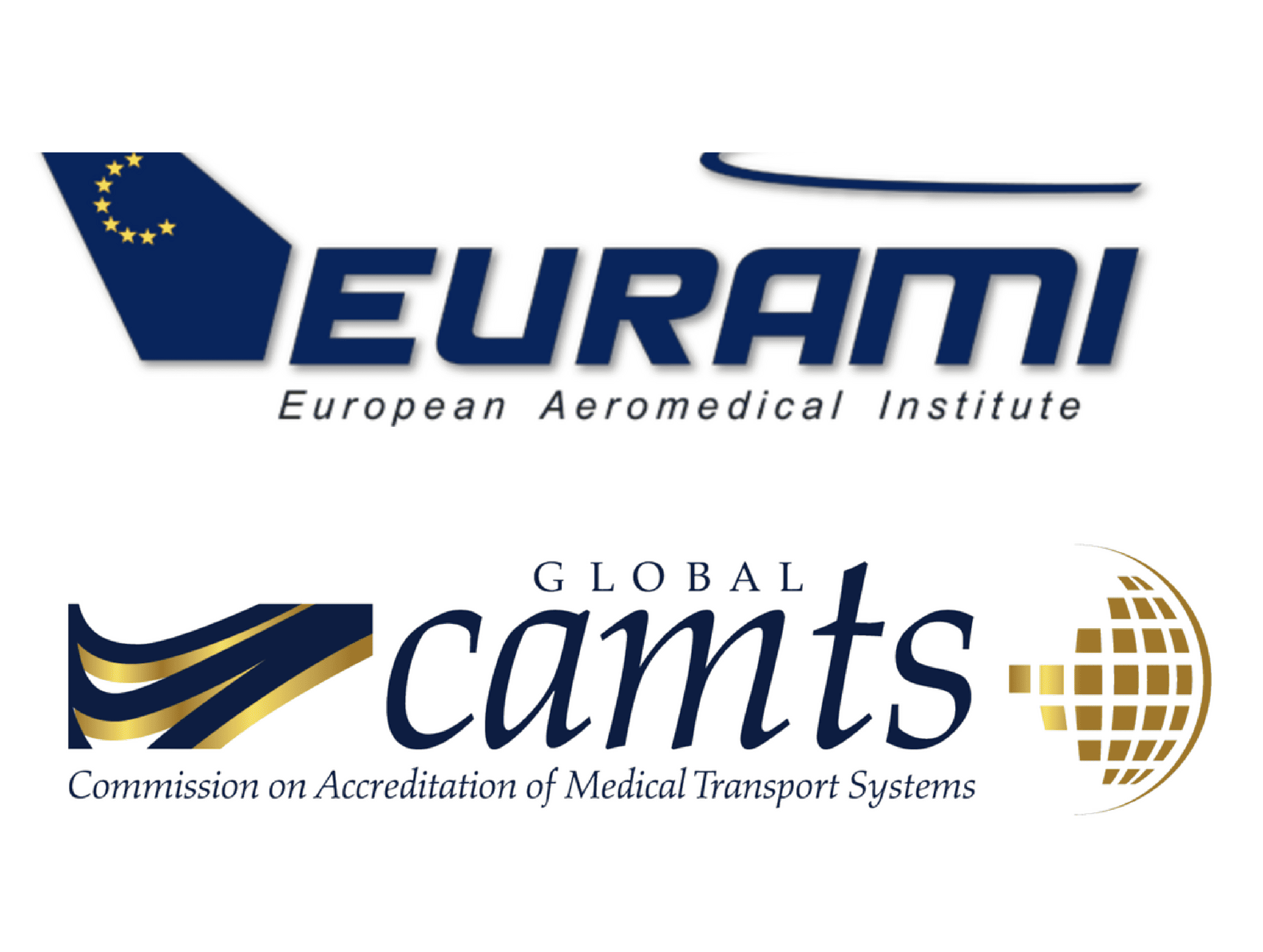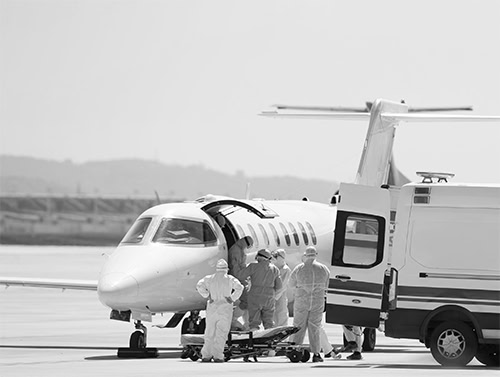Air Ambulance Quality Marks: EURAMI and CAMTS
The European Aero-Medical Institute, a nonprofit organization based in Germany, is widely considered to be an indicator of excellence, quality, and safety in aeromedical transportation. Founded by the leading aeromedical providers in the world in 1992, it has since developed into a globally recognized institution with more than 50 accredited providers worldwide. EURAMI works to promote best practices in patient care by creating and publishing standards in the field of Fixed Wing Air Ambulances, Rotary Wing Air Ambulances as well as Commercial Airline Medical Escorts.
CAMTS is a United States-based organization dedicated to improving the quality and safety of medical transport services, with 21 current member non-profit organizations. The Commission offers a program of voluntary evaluation of compliance with accreditation standards demonstrating the ability to deliver service of a specific quality. They believe that the two highest priorities of air medical or ground inter-facility transport services are patient care and the safety of the transport environment.
Both CAMTS and EURAMI Standards are reviewed every few years to address emerging issues of patient care and safety in fixed and rotary wing services as well as ground inter-facility services providing critical care transports. Each standard is supported by criteria to measure a program’s level of quality. To achieve accreditation, medical transport services must demonstrate best practices and compliance with either CAMTS / CAMTS Global or EURAMI standards.
Both organizations conduct site visits worldwide to ensure the services that achieve accreditation maintain compliance with these standards. For example, CAMTS requires that applicants meet specific criteria in areas such as Aircraft/ Surface configuration, Communications, Legal Requirements, Ethical Practice, Medical Direction and Medical Protocol, Mission Statement and Scope of Care, Safety Management, Scheduling and Fatigue Management, etc.
Within company philosophy or marketing communication, for instance, EURAMI looks at whether the provider acknowledges that an appropriate transport would enhance the patient’s outcome, from a lower level of care to an equal or higher level of care, and again for evidence that shall demonstrate that quality patient care is not compromised by financial pressures. Social media advertising is frequently scrutinized to ensure that no lapse of confidentiality or inappropriate entries appears online.
The above instances give us an indication of how CAMTS / EURAMI works to give us a clear criterion for distinguishing trustworthy providers in a service sector where end-users find it difficult to choose the right provider. They are also an indicator of trust for medical assistance firms that hire only these certified providers for their clients. And even these are governed by strict standards: evidence must be provided that the agent commissioning the mission, and the patient (or next of kin), are made aware that the service is not using its own resources.
These standards not only apply to the aeromedical process but even to the organization itself and its personnel. For instance, EURAMI would also be looking for evidence that staff is valued and recognized for their contributions to the success of the service, or that there is a clear reporting mechanism to upper-level management. Besides, they look for a clear disciplinary process that protects employees from capricious actions.
Thus, all in all, these certifications offer comprehensive quality assurance for multiple stakeholders in the air ambulance journey. And this is the reason Bluedot insists on all its providers having either qualification without compromise.



